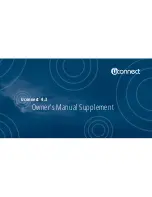
2
TABLE OF CONTENTS
1.
GENERAL
Location of controls ........................................................
3
Resetteing the unit ...........................................................
4
Detaching the front panel ................................................
4
Setting the clock ..............................................................
4
Installation .......................................................................
5
Connections .....................................................................
6
2.
DISASSEMBLY
......................................................... 10
3.
ASSEMBLY OF MECHANISM DECK
........... 11
4.
MECHANICAL ADJUSTMENTS
....................... 14
5.
ELECTRICAL ADJUSTMENTS
......................... 14
6.
DIAGRAMS
6-1. Block Diagram – TUNER Section – .............................. 18
6-2. Block Diagram – TAPE/MAIN Section – ...................... 19
6-3. Block Diagram – DISPLAY/KEY CONTROL/
BUS CONTROL/POWER SUPPLY Section – .............. 20
6-4. Note for Printed Wiring Boards and
Schematic Diagrams ....................................................... 21
6-5. Printed Wiring Board
– MAIN Board (Component Side) – .............................. 22
6-6. Printed Wiring Board
– MAIN Board (Conductor Side) – ................................ 23
6-7. Schematic Diagram – MAIN Board (1/3) – ................... 24
6-8. Schematic Diagram – MAIN Board (2/3) – ................... 25
6-9. Schematic Diagram – MAIN Board (3/3) – ................... 26
6-10. Printed Wiring Board – KEY Board – ........................... 30
6-11. Schematic Diagram – KEY Board – ............................. 31
6-12. IC Pin Function Description ........................................... 32
7.
EXPLODED VIEWS
................................................ 35
8.
ELECTRICAL PARTS LIST
............................... 38
Flexible Circuit Board Repairing
• Keep the temperature of the soldering iron around 270 ˚C dur-
ing repairing.
• Do not touch the soldering iron on the same conductor of the
circuit board (within 3 times).
• Be careful not to apply force on the conductor when soldering
or unsoldering.
Notes on chip component replacement
• Never reuse a disconnected chip component.
• Notice that the minus side of a tantalum capacitor may be dam-
aged by heat.
Summary of Contents for XR-3100R
Page 3: ...3 SECTION 1 GENERAL This section is extracted from instruction manual ...
Page 4: ...4 ...
Page 5: ...5 ...
Page 6: ...6 ...
Page 7: ...7 XR 3100R ...
Page 8: ...8 XR C33R ...
Page 9: ...9 ...
Page 31: ...31 31 XR 3100R C33R 6 11 SCHEMATIC DIAGRAM KEY Board See page 29 for Waveform Page 26 ...



































